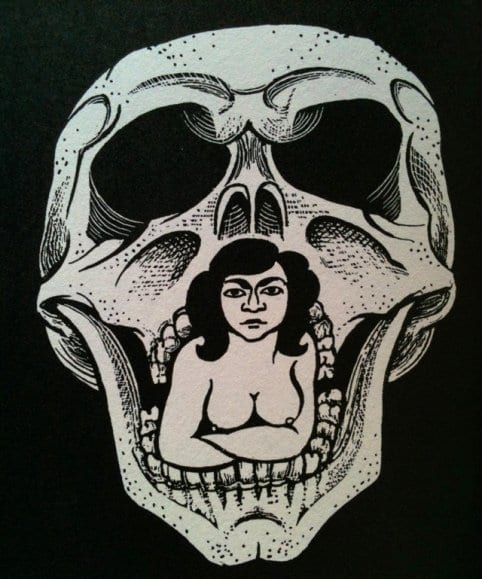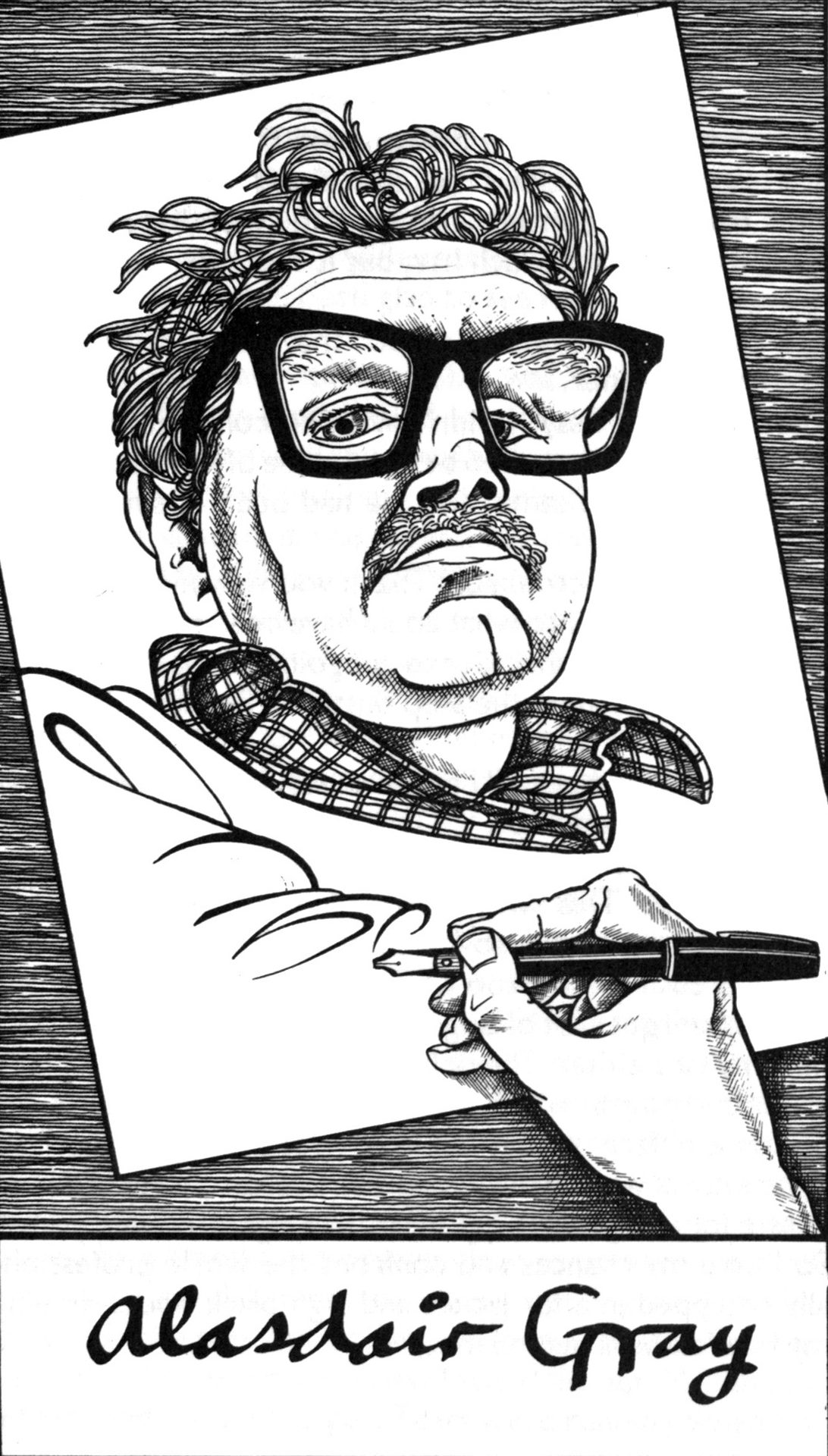Victoria McCandless

Poor Things (1992) illustration, courtesy AGA
Character Description: Victoria McCandless
'Dr. Victoria McCandless was found dead of a cerebral stroke on 3rd December 1946. Reckoning from the birth of her brain in the Humane Society mortuary on Glasgow Green, 18th February 1880, she was exactly sixty-six years, forty weeks, and four days old. Reckoning from the birth of her body in a Manchester slum in 1854, she was ninety-two' (p317).
Dr. Victoria McCandless: socialist, feminist, Frankenstein’s creature? An ambivalent Victorian, she was born in Manchester and educated at a Swiss convent school ‘to be a rich man’s domesticated toy’ (p258). The men in her life aren’t up to much: her father is wealthy and cruel, her first husband an abusive General from whom she escapes to Glasgow. In Glasgow, she takes refuge in the home of Godwin Baxter, ‘the only man I have truly loved’ (p259), at 18 Park Circus. It is in Park Circus that she first encounters her second husband, our author Archibald McCandless. Following their engagement, she elopes spontaneously with Duncan Wedderburn to travel the world but returns when things don’t quite work out. Victoria strongly disputes Archibald’s version of events: she is no man-made monster. In the same year as becoming Scotland’s first woman graduate of medicine, she opens a natal clinic for working class women and children in Cowcaddens. The press scoffs at the ‘Bolshevik doctor’, but her commitment to fairness for all remains until death. Her last known letter, addressed to the Scottish poet Hugh MacDiarmaid, expresses hope for a socialist future that, as we know, does not come to pass.
Written by Emma Flynn
Alasdair Gray's Medical Women:
Poor Things, a Thesis and a History
Alasdair Gray's Medical Women: Poor Things, a Thesis and a History uncovers the relationship between Gray’s ‘medical women’ and the inspiration for these characters - the Victorian pioneer, Sophia Jex-Blake, who campaigned for the rights of women to study medicine at University and practice as doctors. Be warned: this is no simple tale about literary parallels. With the help of its primary contributor, Dr. Sarah J Ghasedi, the podcast unlocks a secret held tight by Sophia Jex Blake for over one hundred and fifty years. In turn, original scholarship prompted by Ghasedi's discovery is provided by Rachel Loughran who offers a new thesis about Gray’s Medical Women.
Alasdair Gray's Medical Women: Poor Things, a Thesis and a History was written and produced by Rachel Loughran. Its sound designer is Jen Martin. It includes music by Scott Tynham (Piano Lumineuse, Tekstura, Blurred Recordings) and features the audio play 'Sophia' by Frances Poet. The extract from Poor Things the radio play by Alasdair Gray is held on tape by the National Library of Scotland and was digitized on request by the Collections on Tape team at Glasgow Museums. Fiona Belchamber is the voice of Victoria McCandless (reading 'a Letter to Posterity') and Sophia Jex Blake (reading Preface to Medical Women). Dr. Sarah J. Ghasedi is the podcast's primary contributor.
Postscript
To borrow from Jex-Blake’s Medical Women, I have made it my object to give as complete and comprehensive a view as brevity would allow of the relationship between the real medical women of the late Victorian period and those of Alasdair Gray’s Poor Things. As with every story that is told, certain facts are left untold. One such tale, I’ll tell here:
In Victoria’s letter to posterity, the doctor confirms that she burned ‘every scrap’ of her husband’s original manuscript bar the ‘single copy he had printed and bound’ (p251). By burning any evidence of her husband’s story, aside from the copy to which her counternarrative is affixed, Victoria safeguards her version of the narrative and ensures she cannot be connected with Bella Baxter. The act of burning is therefore a strategy - one that lessens the likelihood of more public scandal after her death and one that decreases the chances of her name being further associated with anything other than her medical achievements.
And now we turn to the real medical women who inspired Gray’s novel.
Scottish doctor Margaret Todd was one of the first students to enroll in Sophia Jex Blake’s Edinburgh School of Medicine for Women. In addition to her medical career, Todd was a novelist. She wrote her first novel, Mona McLean Medical Student (1892) under the male pseudonym Graham Travers. By the time she wrote The Life of Dr. Sophia Jex-Blake (1918), after moving to Sussex with the elder doctor upon her retirement, Todd was writing under her own name. In recent years, historians including Elisabeth A. Lloyd and Mary Crawford have re-examined the relationship between the two women. What they found was compelling enough to suggest that the doctors were long term romantic partners. Any concrete evidence of this, however, may have been deliberately destroyed. Jex-Blake died in 1912. After her death, Todd burned many of Jex-Blake’s personal letters, presumably including some she had herself written to Jex-Blake. We'll never know the truth about their connection for certain. The true nature of the women’s forty plus year relationship is, somewhat sadly, absent from Todd’s book.
Character Prompts
What does the statement ‘the only man I have truly loved’ suggest about Victoria’s past relationship with men?
How does Victoria McCandless character develop throughout the story?
Why do think commitment to fairness is important to Victoria McCandless?
Why do you think Victoria McCandless’ future for a socialist future does not come true?
What does Victoria’s medical experience (clitirodectomy) say about the way society views the female body?
Get involved! Share your response to the promts using #PoorThings
Prompts written by Grace Richardson and Janaki Mistry
Before meeting some of Gray's less amiable characters and outright villains you should first explore Gray's Social Conscience. Gray's concern for societal problems and inequities is present throughout his work and is particulaly eveident in Poor Things, especially through the interactions between two key characters: Dr. Hooker and Mr Harry Astley. You'll meet them on the next stage of your journey. Click Gray's self-portrait to find out more.

